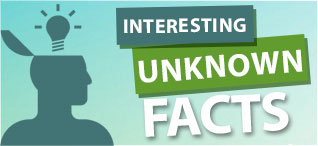Interesting and Unknown facts about Human body
Humans have had a long history. 3.8 billion years in the making, to be precise. From the primordial puddle to the modern day, here's how humans have evolved from the first life. The following is a review of the life forms depicted in the video: Prokaryote, Cyanobacteria, Eukaryote, Choanoflagellate, Platyhelminthes (Flatworms), Pikaia, Haikouichthys, Agnatha, Placodermi, Cephalaspis, Coelacanth, Panderichthys, Tiktaalik, Acanthostega, Ichthyostega, Hynerpeton, Tulerpeton, Westlothiana, Hylonomus, Phthinosuchus, Cynognathus, Repenomamus, Juramaia, Plesiadapis, Carpolestes, Aegyptopithecus, Proconsul, Sivapithecus, Ouranopithecus, Orrorin, Ardipithecus, Australopithecus, Homo erectus, Neanderthal, Homo sapiens. Click here to view human evolution
Millions of years ago
Classification of these primitive organisms is still unclear.
- Animals begin to diversify into major clades.
- The first arthropods, chordates, and mollusks appear. Trilobites - one of the most successful animal groups of the Paleozoic.
- Plants begin to colonize land.
- Arthropods - the first animals adapted to life outside water. Wood begins to develop on plants, forming the first trees.
- Vertebrates develop lungs and limbs, gradually enabling them to live on land. A high level of oxygen in the atmosphere at this time allows arthropods to grow larger than today.
- Tetrapods begin to diversify. The first synapsids and diapsids appear.
Millions of years ago
After the great Permian extinction, surviving quadrupeds began to evolve, occupying various niches.- The first dinosaurs appear along with other archosaurs.
- Future mammals are believed to have evolved from cynodonts. Dinosaurs become the dominant group of animals on Earth.
- The origin of stegosaurs and ankylosaurs. Ichthyosaurs and plesiosaurs dominate in Jurassic oceans.
- These insects already pollinate gymnosperms (non-flowering plants). Flowering plants begin to spread, eventually becoming the dominant flora of ecosystems.
From 65 million years ago to the present day
- After the disappearance of rudists (a group of bivalve mollusks), corals take their place as reef builders.
- Birds - the only group of dinosaurs to survive the Cretaceous extinction - diversify rapidly with mammals.
- The origin of horses.
- These animals give rise to dogs, bears, and seals... Various groups of mammals also begin to occupy aquatic niches left by marine reptiles. The success of angiosperms (flowering plants) and especially grasses promotes the proliferation of herbivorous animals and pollinating insects.
- It is believed that during this time, the human and chimpanzee lineages diverged from their common ancestor. South and North America merge, leading to significant faunal exchange and dramatic climatic consequences. Actinopterygians (bony fish) become the dominant and most diverse group of fish. New species of animals and plants (dogs, pigs, wheat, fruit trees...) appear through selection or genetic engineering. Currently, we are likely experiencing the 6th mass extinction. Excessive consumption, environmental pollution, deforestation, or traditional Chinese medicine are some of the reasons.
Interesting and Unknown facts about Human body
![Interesting and Unknown facts about Human body]() Reviewed by Chaitanya Chaithu
on
Sunday, September 17, 2023
Rating:
Reviewed by Chaitanya Chaithu
on
Sunday, September 17, 2023
Rating:

.png)











.png)

No comments